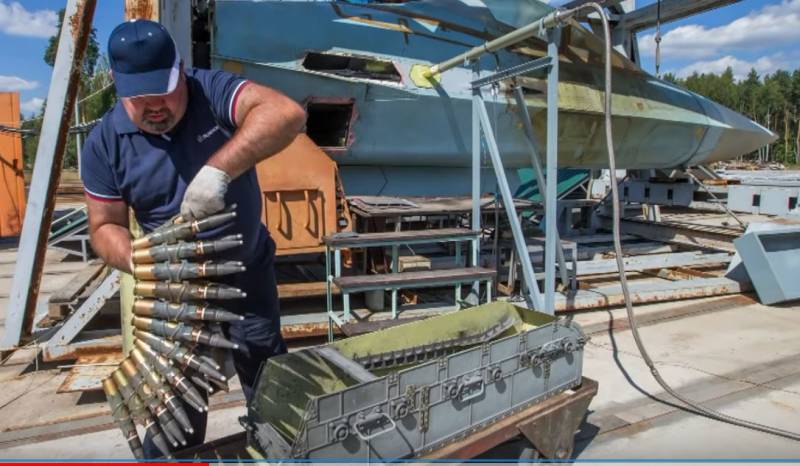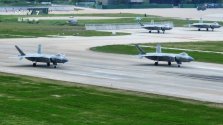You are using an out of date browser. It may not display this or other websites correctly.
You should upgrade or use an alternative browser.
You should upgrade or use an alternative browser.
J-20 5th Gen Fighter Thread VIII
- Thread starter Blitzo
- Start date
From one of my collections, supposedly to be J-20 gun test on the ground. I got it from 2019. There is also a study paper from 2017 about buried gun.
View attachment 121442
Hmm? But IMO it makes no sense to fire the gun with an open canopy!
It could be similar test like Su-57, just a partial fuselage. Canopy being open or closed or even without isn't an issue, just to verify the sturdiness of the mounting and vibration. IMO, Americans often do things way more wasteful than Russian and Chinese.Hmm? But IMO it makes no sense to fire the gun with an open canopy!

kwaigonegin
Colonel
I think 2.8 mach is extremely improbable.J20A is likely to be able to reach some mach in the 2 range, like somewhere between say ~2.2 to 2.8 (likely with afterburners).
As max without afterburners? We don't know, but I don't think it would be wrong guess at a number above 1.5.
Kinda agree.I think 2.8 mach is extremely improbable.
Although would not be that super surprised either, if it turns out it could reach such a max speed (for a short perido, no missiles, low fuel, max altitude, favorable wind conditions, pushing the engine to its limits with afterburners).
I put it there as basically, an overestimate / possible best scenario.
Mach 2.8 is really doubtful. As high Mach speeds there is substantial skin friction and heating. Stealth fighters are typically made of composites of carbon fibers with phenolic resin. Then they have composite fiber mats and special ferromagnetic paints. These materials aren't that survivable at high temperatures.
The skin friction issue is why the SR-71 was made of titanium and the MiG-31 was made of stainless steel.
The skin friction issue is why the SR-71 was made of titanium and the MiG-31 was made of stainless steel.
Never said it wouldn't have lasting damages or impact on maintenance, or that it would be a speed that gets 'used' or the likes (more likely, if 2.8 was max speed, then it might have been achieved in some specific test flight).Mach 2.8 is really doubtful. As high Mach speeds there is substantial skin friction and heating. Stealth fighters are typically made of composites of carbon fibers with phenolic resin. Then they have composite fiber mats and special ferromagnetic paints. These materials aren't that survivable at high temperatures.
The skin friction issue is why the SR-71 was made of titanium and the MiG-31 was made of stainless steel.
Not necessarily a mistake, although the units don’t quite match (strictly speaking recoil is a force and “4500kg” talks about mass).Can you post the full article or at least the full page of this figure? How is it concluded that it is for J-20? Did the paper say so?
BTW, there is apparently an error, the recoil is no greater than 4500kg from a cannon of only 110kg.
View attachment 121360
in my understanding the “4500kg recoil” describes the recoil when the gun is firing (according to Newton every force has an inverse force with same magnitude and inverse direction yada yada yada, the gun “throws” bullets forward fast and subsequently experiences a force backward, AKA recoil) and is independent of the actual weight of the gun.
As for the units thing, that may be a norm in the industry and everyone just measures recoil in kilograms for ease of calculation or whatnot. I personally see 2 possibilities on it, one being that the “4500kg” needs to be converted into newtons and that will show the actual amount of recoil “force”; the other being that when they said “kg” there it actually means “kgf” or “kilogram force”. Just my own speculations though
Actually the two possibilities are the same, both take kg (unit of mass) as kgf (unit of force). In the first possibility you are taking kg as kgf in order to convert.Not necessarily a mistake, although the units don’t quite match (strictly speaking recoil is a force and “4500kg” talks about mass).
in my understanding the “4500kg recoil” describes the recoil when the gun is firing (according to Newton every force has an inverse force with same magnitude and inverse direction yada yada yada, the gun “throws” bullets forward fast and subsequently experiences a force backward, AKA recoil) and is independent of the actual weight of the gun.
As for the units thing, that may be a norm in the industry and everyone just measures recoil in kilograms for ease of calculation or whatnot. I personally see 2 possibilities on it, one being that the “4500kg” needs to be converted into newtons and that will show the actual amount of recoil “force”; the other being that when they said “kg” there it actually means “kgf” or “kilogram force”. Just my own speculations though
4500kg is massive force, but the impact on the shooter may be small IF the impact time is very short, so the kinetic energy (F * T * D) can be small. So I agree, maybe there is no mistake.
How accurate is Donald Canton on Quora? He said J20 is the most stealthiest jet in the world.
"The J-20 uses micro-metal structure stealth materials. This is a meta-material technology that is ahead of the US military's F35. This means that the J-20's stealth performance is the best in the world. When the J-20 patrolled the Chinese island of Taiwan and intercepted American fighter jets in the East China Sea, the J-20 was not detected by U.S. radars. Even when the U.S. fighter pilots could visually see the J-20, the radar of the U.S. early warning aircraft did not show the J-20, which was sufficient. It illustrates the stealth performance of the J-20.
According to U.S. Pacific Air Forces Commander Kenneth Wilsbach, the F-35 had a close encounter with China's J-20 stealth fighter jet in the East China Sea and found that the U.S. early warning radar could not see the J-20.
The J-20 has a higher radar cross-section (RCS) than the F-35. The J-20 has a triangular design and wide frame, which increases its RCS. However, the J-20 is equipped with radar-absorbing material and electronic countermeasures to reduce the likelihood of detection.
Those aren’t the Chinese claims but the American authority confessions.
The canards of the J-20 are not ordinary canards, but China’s original lifting body side-strip canard layout. In addition to the medium and low-altitude maneuverability of modern advanced fighter jets, fighter jets must also have supersonic cruise capabilities, as well as unconventional maneuverability capabilities such as over-stall speeds. Its aerodynamic layout must, on the premise of meeting the shape stealth constraints, reduce its supersonic drag as much as possible, improve the maximum lift characteristics and stability and controllability at large angles of attack, and take into account the sub-transonic lift-drag characteristics. There is some favorable coupling between the canards, front strakes and wings. The lift body layout of the wing-body fusion can use the fuselage to generate lift, increase internal volume and improve stealth characteristics at a small cost of drag.
The lifting body side-wing canard layout, excellent stealth structure and world-leading stealth materials are also important reasons why the J-20's stealth technology is unrivaled in the world.
In addition to stealth technology, China also leads the world in anti-stealth technology. The fourth-generation meter-wave anti-stealth radar technology is a global original. The reason why China is known as the only country with advanced anti-stealth meter-wave radar is that it can use a set of antennas to solve the problem of traditional meter-wave radar being unable to measure altitude and achieve precise three-coordinate positioning and tracking. Not only is it capable of detection, it is also capable of guiding fighter aircraft to intercept and even directly support fire control attacks."
"The J-20 uses micro-metal structure stealth materials. This is a meta-material technology that is ahead of the US military's F35. This means that the J-20's stealth performance is the best in the world. When the J-20 patrolled the Chinese island of Taiwan and intercepted American fighter jets in the East China Sea, the J-20 was not detected by U.S. radars. Even when the U.S. fighter pilots could visually see the J-20, the radar of the U.S. early warning aircraft did not show the J-20, which was sufficient. It illustrates the stealth performance of the J-20.
According to U.S. Pacific Air Forces Commander Kenneth Wilsbach, the F-35 had a close encounter with China's J-20 stealth fighter jet in the East China Sea and found that the U.S. early warning radar could not see the J-20.
The J-20 has a higher radar cross-section (RCS) than the F-35. The J-20 has a triangular design and wide frame, which increases its RCS. However, the J-20 is equipped with radar-absorbing material and electronic countermeasures to reduce the likelihood of detection.
Those aren’t the Chinese claims but the American authority confessions.
The canards of the J-20 are not ordinary canards, but China’s original lifting body side-strip canard layout. In addition to the medium and low-altitude maneuverability of modern advanced fighter jets, fighter jets must also have supersonic cruise capabilities, as well as unconventional maneuverability capabilities such as over-stall speeds. Its aerodynamic layout must, on the premise of meeting the shape stealth constraints, reduce its supersonic drag as much as possible, improve the maximum lift characteristics and stability and controllability at large angles of attack, and take into account the sub-transonic lift-drag characteristics. There is some favorable coupling between the canards, front strakes and wings. The lift body layout of the wing-body fusion can use the fuselage to generate lift, increase internal volume and improve stealth characteristics at a small cost of drag.
The lifting body side-wing canard layout, excellent stealth structure and world-leading stealth materials are also important reasons why the J-20's stealth technology is unrivaled in the world.
In addition to stealth technology, China also leads the world in anti-stealth technology. The fourth-generation meter-wave anti-stealth radar technology is a global original. The reason why China is known as the only country with advanced anti-stealth meter-wave radar is that it can use a set of antennas to solve the problem of traditional meter-wave radar being unable to measure altitude and achieve precise three-coordinate positioning and tracking. Not only is it capable of detection, it is also capable of guiding fighter aircraft to intercept and even directly support fire control attacks."

